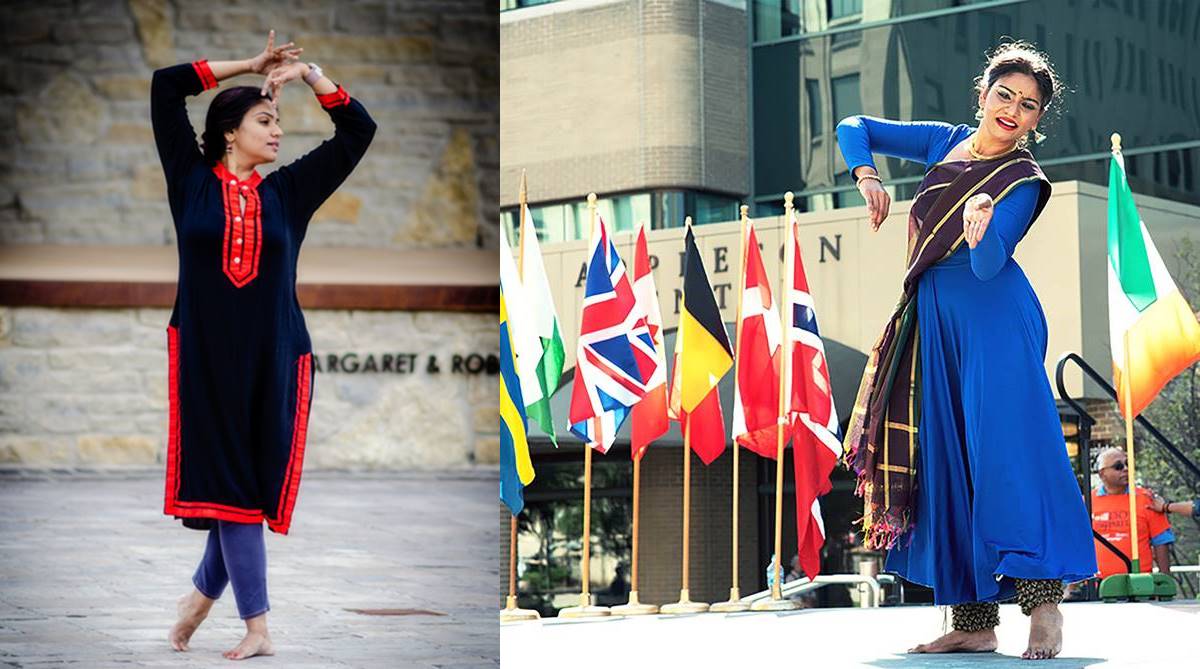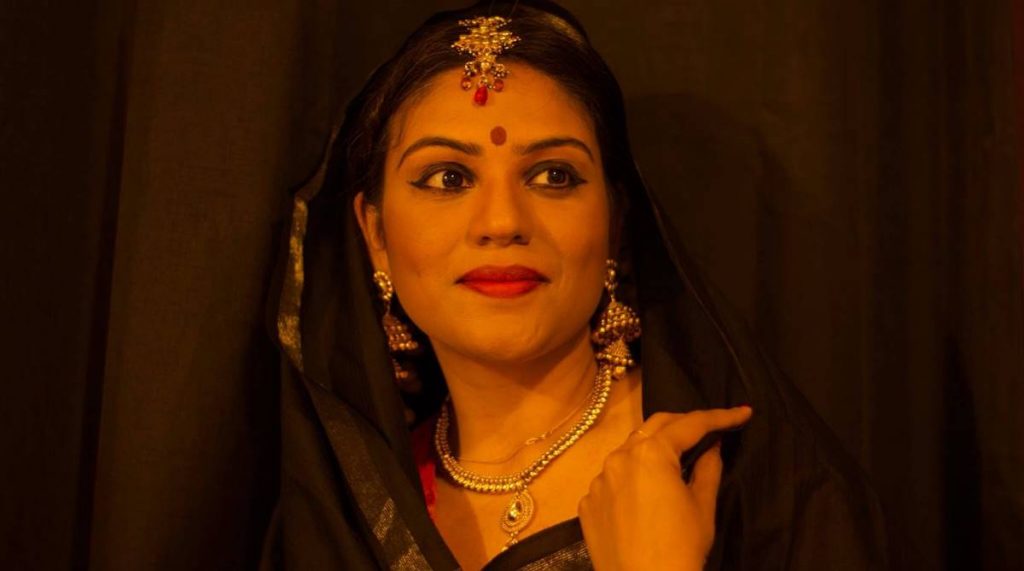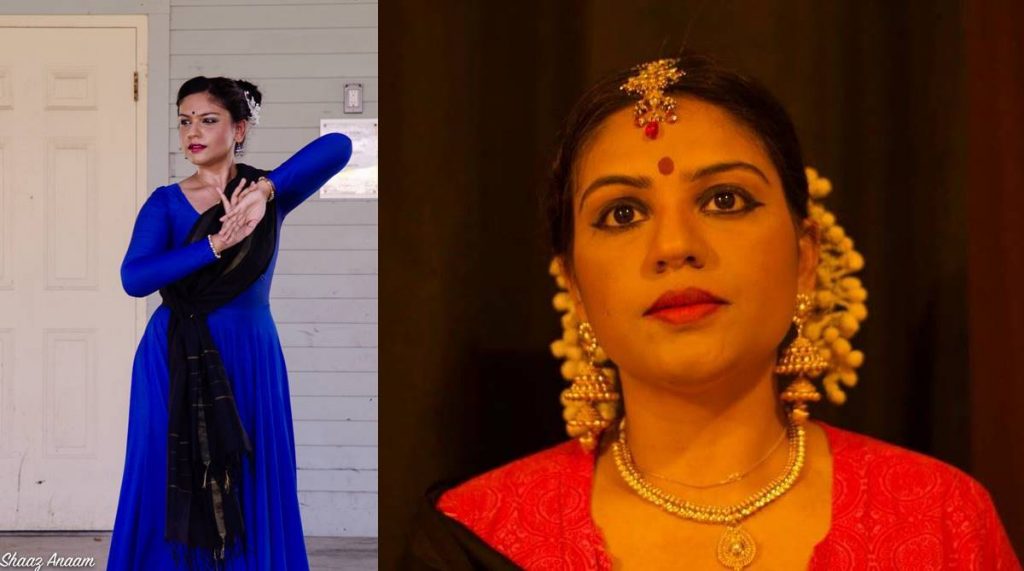Sri Ram Mādhurya: A unique Kathak-Katha-Kutcheri by Sunil Sunkara & Vanitha Suresh
Brahma Gana Sabha witnessed the premiere of “Sri Ram Mādhurya” on 3 January this year, during their Marghazi Dance Festival.
In New Delhi to perform at the Delhi International Arts Festival 2018, Anindita Anaam speaks at length about Kathak, the work she is doing to spread the art, the challenges she faces and many more aspects of the classical dance form

Anindita Anaam will be performing at the India Habitat Centre on Saturday, 8 December, as part of the Delhi International Arts Festival 2018
Scintillating footwork or mesmerising eye movements? Bold and fast chakkars (spins) or captivating todas, tukdas and tihais? Ask any Kathak enthusiast to choose between the two distinctly pronounced styles of the same dance form, and each one will draw a blank. It’s really impossible to tell which one is better. Both Jaipur Gharana and Lucknow Gharana have their own unique appeals, and are equally enthralling to the eyes of the viewers. But it’s a different experience altogether when a dancer imbibes both styles and that reflects in the performance. Kathak exponent Anindita Anaam is one such artist.
US-based Anindita, who was awarded the Jayadev Rastriya Yuva Puraskar earlier this year, has been working on propagating the Indian dance in America, especially in regions without a thriving Indian population. The talented dancer is currently in New Delhi to perform at the Delhi International Arts Festival 2018.
Advertisement
Anindita, who had got her first training in Kathak from her mother Falguni Neogy, learnt finer techniques of the dance form from veteran exponent Uma Sharma at the Uma Sharma School of Dance, before her fascination for the speed of Jaipur Gharana led her to renowned Guru Pt Rajendra Gangani, and the urge to understand the finesse of Lucknow Gharana took her to Pt Jai Kishan Maharaj (eldest son of legendary Pt Birju Maharaj) and his wife Vidushi Ruby Mishra.
Advertisement
Having moved to Wisconsin in the US in 2015, Anindita has taken it upon herself to introduce the classical Kathak to the locals and let them taste the rich heritage of India.
She has performed at many festivals in that country and got platforms to showcase her art.

The task, however, has not been easy. In her own words, making the non-Indians aware of her style of dancing was a “gargantuan task”.
“When I first shifted to the North East part of Wisconsin, it was a challenge to spread the Indian art because these areas have very less exposure to Indian culture, unlike Bay Area and New York where there is a thriving Indian community. I was culturally shocked but the dancer inside me didn’t let me rest. From here started my journey of spreading the art instead of suppressing my artistic desires. I started reaching out to county recreational departments, libraries, parks, local ballet and tap dancing studios, colleges, schools, and insisted them on holding free workshops, no-fee dance classes, lecture demonstration and exchange programmes,” Anindita Neogy Anaam tells The Statesman.
Her hard work did not go in vain.
“I was invited by Wisconsin Logging and Heritage Festival for solo performance alongside No 1 band of the state Johnny Wadd. People came in large numbers to witness Kathak, which was a major feat for me.”
The challenges, however, continued and it required some compromises with the tradition to overcome them.
“Initially, an issue I faced was the choice of music and style of costume. My audience mainly consists of non-Indian Americans. They are not very fond of gaudy dress-ups in theater and performing arts unless there is a good reason for it. They want glitz and glamour in a balanced manner. So I chose the mono-coloured praise dresses and fused them with traditional dupatta and simple ornaments… It was a constant experiment to look modern yet authentic,” adds Anindita.
Another issue was the music. “They do not understand our mythology, and using Radha Krishna songs, Meera bhajans though are welcome, they are unable to decipher the context of the movements and the story behind them. So I chose Indian classical world music such as Lasya by Anoushka Shankar, Niraj Chag’s Kanya, Fur Elise, Rhythmscape to name a few. My idea was that music transcends boundaries and connects hearts. So why use lyrics, let the music guide the soul. This idea worked wonders. They loved the fast paced Indian music with powerful Kathak recitals and started to derive pleasure from each performance.”
One good thing she finds while nurturing her art form living in the US of A is the state-of-the-art studios that give artistes “a blank space for imagination and creativity”.
Also, says Anindita, due to the melting pot of cultures, she gets to meet dancers from all kind of styles from around the world who are ready to share their art on a much larger scale and platform. “This exchange also helps in shaping and nurturing each other’s aesthetics and dancing patterns, giving it a global feel.”
When it comes to America, Anindita feels Indian art is restricted to big cities such as Atlanta, Chicago, Bay area, Texas and a few more, and she said Indian consulates should give more opportunities to young performers alongside veteran ones for a wider appeal.
Ruing that she did not receive “any help in terms of resources from Indian government for my artistic work”, Anindita says there is not enough literature present for circulation and the wider scope of Indian dance styles to blend with its western contemporaries.
Use of Bollywood interchangeably with Indian classical arts is another area of concern for the artistes.
“Many people approached me with this confusion of how my dance was different from film numbers. So I do not blame them but blame the lack of work from Indian ministries to take our culture across states of USA and other parts of the world,” says Anindita.
“A lot of work is required at the government’s end to popularise our Indian art forms at par with western classical styles like ballet.”
She however sees a lot of hope in use of social media. “Social media like Facebook, Instagram, Twitter are hopes for Indian dancers to make the world aware about these ancient dancing forms which require years of hard work to master the techniques.”
And Anindita gives all credit to platforms such as YouTube, Instagram feeds, Facebook videos, Vimeo and Imovie software etc for the fact that Indian classical arts thriving, and people are now “way more aware about Indian classical arts than in the past”.
“I am an Indian Raga Fellow and went to San Diego for my fellowship where I got the chance to meet so many bright and intelligent dancers and musicians born and brought up in USA. But looking at their performance, one cannot even believe that they learnt these classical arts in USA,” she says.

Anindita attributes her personal style of dance to her many Gurus from whom she learnt the art.
“I started my training under my mother Mrs Falguni Neogy and then joined Uma Sharma School of Dance. There I learnt finer techniques of Abhinaya from Uma Sharma ji. Later, I was fascinated with the speed of Jaipur Gharana that led me to world famous Guru Pt Rajendra Gangani. After several years under him, I felt a need to understand the finesse of Lucknow Gharana and how these gharanas are different in their execution. This quest led me to Pt Jai Kishan Maharaj and his wife Vidushi Ruby Mishra. They are doyens of the Lucknow school of Kathak.”
Trained in both Jaipur and Lucknow gharanas of Kathak, Anindita’s dance has the influence and taste of both the styles that are quite different from each other in their techniques and manifestations.
“Kathak is a very rhythmic dance form and perhaps the only one which can match its western counterparts both in terms of rhythm, presentation and styles. I only recommend the learners of the art to undergo training under both schools of Kathak to reflect speed on stage with grace.”
Anindita says both the gharans are captivating and enchanting to their viewers, and explains the reasons: “Jaipur Gharana is a way more geometrically straight in their dancing approach, moves are bold, fast pirouettes. More work goes into mastering the chakkars, swift foot movements and heavy taal bols of ancient instruments like pakhawaj. They are more prone to enact bhajans and devotional songs because of Rajasthan being a Hindu state. They don’t have very fine upper body movements but more stress on mastering the rhythmic footwork and different forms of spins. Kathak of Jaipur style has many aspects influenced from folk arts like Kalbelia and Ghoomar especially the various types of chakkars.
“On the other hand, due to Islamic influences, Lucknow style is fast but with a touch of intricate grace and finesse. They do not have too many types of chakkars but their wider groups of upper body movements and body bends with soft eye movements really elevate the style to a different level. They have lots of number tihais (repetition of any set of beats three times) which is easier for a layman to understand and enjoy the rhythmic delight. They use a lot of todas and tukdas in which they try to enact simple conversation or elements of nature creating a wider appeal.”
The Wisconsin-based dancer specialises in fusion, to make it more acceptable to newer audience. And the seed of this was definitely sown in her under the tutelage of Guru Jai Kishan.
“Jai Kishan Guruji opened a new dimension of dance. His style was so contemporary and focused with a touch of intricate long and graceful movements striking a remarkable balance between Ballet and Kathak. His style is a pure magic. So my dance always reflects the blends and shadows of my training under the masters,” she says.
For dancers settled abroad, Anindita believes, fusion is key to attract wider and globally diverse audiences to Indian classical styles. “The use of world music whether blending sitar with hand drums or Mohan Veena with acoustic guitars the possibilities are unlimited and the music which originates are nothing less than divine and truly thrilling. Indian dances are slowly coming out of their cocooned story lines like mythological characters or ancient epics. Nowadays, dances like Kathak and Bharatnatyam are creatively being used to send strong messages on social issues like LGBT rights, wars and its effect on people, bad effects of technology on lives, robotic lifestyles,depression, women and child rights and so on. Dance is no more a medium of only depicting various moods of love and emotions in Radha Krishna storytelling method but slowly emerging into a strong tool of social transformation. The best part is that the authenticity of each style has been kept intact.”
Shedding light on her own work, Anindita recalls: “Recently, I worked on an Indian Raga project where I led a choreography on the darkness of real vs virtual life. The fake side of our virtual self and the constant battle to look and appear perfect online. We hide our dark sides and post only happy ones but deep inside we all have our demons and weaknesses. I tried to show that how the world of social media is robbing us of our real friendship and our ability to share and connect. It is due for release next year and was choreographed in Kathak and Kuchipudi based on Beethoven’s Fur Elise.”

She is also working on a production exploring the “free self of a girl in a rhythmic rendezvous with bucolic nature.”
Anindita feels people of India must embrace Indian arts with same respect they have for foreign ones. She believes shows should be ticketed to give the artistes their dues. And she has a special piece of advice for parents: “Take your kids to the concerts and encourage them to learn the Indian music and dances… Show them all kind of music, from western to Indian genres, giving them a flavor of world and show how one shapes the other.”
She has something to tell the government too.
“I have a request to the Government of India to promote young artistes and fund new art works, productions and enable them with resources to present the world with Indian style dance theaters, choreography and opera kind productions.”
Anindita saves her last wish for the media. “Both English and vernacular media should report and publish more art centered news in their prime spaces. Without media, arts cannot flourish. It is a joint collaboration between community, concerned agencies, ministries, artists and media. Our rich arts needs more support to carry on with pioneering and innovative projects.”
Anindita Anaam will be performing at the India Habitat Centre on Saturday, 8 December, as part of the Delhi International Arts Festival 2018 under the category of Indian Art: International Performers.
Advertisement